Apr
14
2023
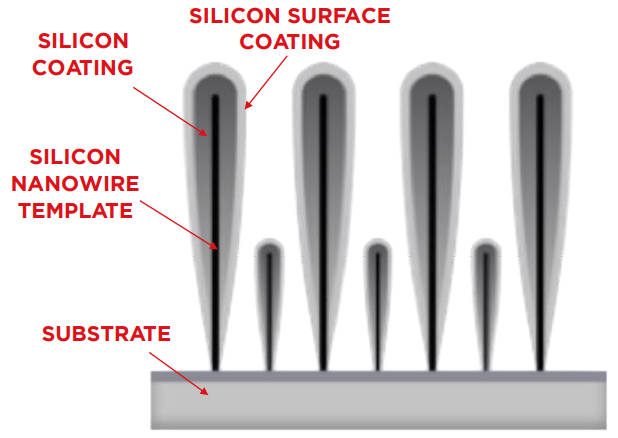 I have been following battery technology pretty closely, as this is a key technology for the transition to green energy. The most obvious application is in battery electric vehicles (BEVs). The second most obvious application is in grid storage. But also there are all the electronic devices that we increasingly depend on day-to-day. That same battery technology that powers your Tesla also powers your laptop and your smartphone.
I have been following battery technology pretty closely, as this is a key technology for the transition to green energy. The most obvious application is in battery electric vehicles (BEVs). The second most obvious application is in grid storage. But also there are all the electronic devices that we increasingly depend on day-to-day. That same battery technology that powers your Tesla also powers your laptop and your smartphone.
As I have discussed before, a useful battery technology needs to simultaneously have a suite of features (with different priorities depending on application) – good energy density (energy storage per volume) specific energy (energy per mass, also called gravimetric density), stability, fast charge and discharge, many rechargeable life-cycles, useful over a large range of temperatures, and made from material that is ideally non-toxic, recyclable, cheap and abundant. The current lithium-ion batteries are actually very good. They have been incrementally improving over the last two decades, allowing for the BEV revolution to really get under way.
But they have some downsides. They are just at the edge of energy density for aviation applications. They use some difficult to source raw material, like nickel and cobalt. They can occasionally catch fire (although are getting safer). And they are still pretty expensive. Further, we are really stretching the lithium supply chain if we want to build millions of cars and lots of grid storage. Fortunately, the key role that battery technology is playing in the green revolution is widely appreciated in the industry, and there has been a tremendous investment in accelerating battery development. Here are a few potential advances I have been keeping an eye on.
The first is actually not potential, but already in production. I interviewed for the SGU this week (the episode will come out Saturyday) the COO of Amprius, who have started production (actual production) of a lithium ion battery with twice the energy density and specific energy of the current batteries being used in BEVs – 500 Wh/kg, 1300 Wh/L vs about 240/650 for a current Tesla battery. So yeah – double. That is not an incremental advance, that’s a pretty big leap. These numbers have been independently verified, so they seem legit.
Continue Reading »
Mar
23
2018
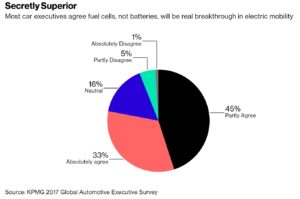 Right now fossil fuels are the king of transportation fuel. They are relatively inexpensive, energy dense, and highly convenient. Burning gasoline produces a lot of energy for acceleration, but the fuel is also relatively stable (it won’t just explode), and usable over a large temperature range. You can quickly fill up your car with gasoline, have a long range on one tank, and there are filling stations everywhere.
Right now fossil fuels are the king of transportation fuel. They are relatively inexpensive, energy dense, and highly convenient. Burning gasoline produces a lot of energy for acceleration, but the fuel is also relatively stable (it won’t just explode), and usable over a large temperature range. You can quickly fill up your car with gasoline, have a long range on one tank, and there are filling stations everywhere.
In many ways gasoline is an ideal fuel, which is why it has reigned supreme for a century. But gasoline isn’t perfect, and the downsides to fossil fuels are coming home to roost. Burning fossil fuels releases pollution that impacts quality of life and causes significant health problems and costs. It also releases previously sequestered carbon into the atmosphere, which is building up and causing climate change.
Further, many of the countries that are a major source of crude oil are not exactly stable democracies. And finally, there is a finite supply of crude oil. It is still not clear what the total remaining reserves are, and the figures change whenever new sources are found and new technologies are developed to extract more oil from existing wells. But no matter what, there has to be finite supplies of oil that will run out eventually.
All of these downsides are why we seem to be living in a transition point away from fossil fuels in general, but especially for transportation. Every automaker seems to think that fossil fuel engines are on the way out, and the trend away from fossil fuel is pretty clear. The real question is – what technology will replace it?
Continue Reading »
Apr
29
2016
 In an updated version of Dante’s Inferno there is one level of science hell that is specifically reserved for headline writers. In their hell there are endless signs pointing the way out of their torment, but all the signs are misleading or overhyped. They are therefore perpetually devastated by the difference between what they are promised and the reality.
In an updated version of Dante’s Inferno there is one level of science hell that is specifically reserved for headline writers. In their hell there are endless signs pointing the way out of their torment, but all the signs are misleading or overhyped. They are therefore perpetually devastated by the difference between what they are promised and the reality.
Take the following headline (please): Researchers have accidentally made batteries that could last 400 times longer. They know the average person is going to read this and think they won’t have to recharge their cell phones but once per year (it’s recharge day, everybody). The headline is not technically wrong, it is just deliberately ambiguous in the use of the term “last.”
There are two ways in which batteries “last” – how long do they last on one charge, and how many charge-recharge cycles do they have. Guess which one we are talking about here.
The news item is also genuinely interesting, and would have grabbed my attention even without the click-bait headline. But first, a quick primer on batteries.
Continue Reading »
May
01
2015
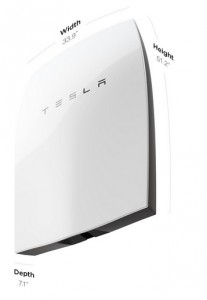 Innovative billionaire, Elon Musk, is introducing the first product designed to be a home battery for the average home – the Powerwall by Tesla. This is a large but shallow and stylish lithium ion battery meant to be attached to the wall of a garage or basement. There are two versions, a 10kWh for $3,500 and a 7kWh for $3,000. That puts it in the range of a typical large home appliance.
Innovative billionaire, Elon Musk, is introducing the first product designed to be a home battery for the average home – the Powerwall by Tesla. This is a large but shallow and stylish lithium ion battery meant to be attached to the wall of a garage or basement. There are two versions, a 10kWh for $3,500 and a 7kWh for $3,000. That puts it in the range of a typical large home appliance.
This is an interesting move, and is earlier than I anticipated such a product would hit the market. I wonder if the market is ready. There are some indications that it may be.
For the homeowner there are two primary uses of a large home battery, one large enough that you can actually run your home, at least for a while. The first is as a backup device for when the power goes out. That in itself would be a useful function, as anyone who has ever lost power to their home can attest. Even if the power goes out for 12 hours or so before being restored, that is long enough to lose everything in your freezer. A day without power is a massive inconvenience, and can even be dangerous in the dead of winter, which is when most power outages occur in my part of the country. It doesn’t take long for the house to plunge into freezing temperatures.
The second use is as a method for using solar or wind produced energy more efficiently. Peak energy use does not coincide with peak sunshine. Right now that is not a big deal, as homes with solar installation are mostly just giving their solar produced electricity to the grid and then pulling from the grid as needed. However, as solar penetration increases we may get to the point that it is a significant contribution to the grid.
Continue Reading »
Apr
19
2024
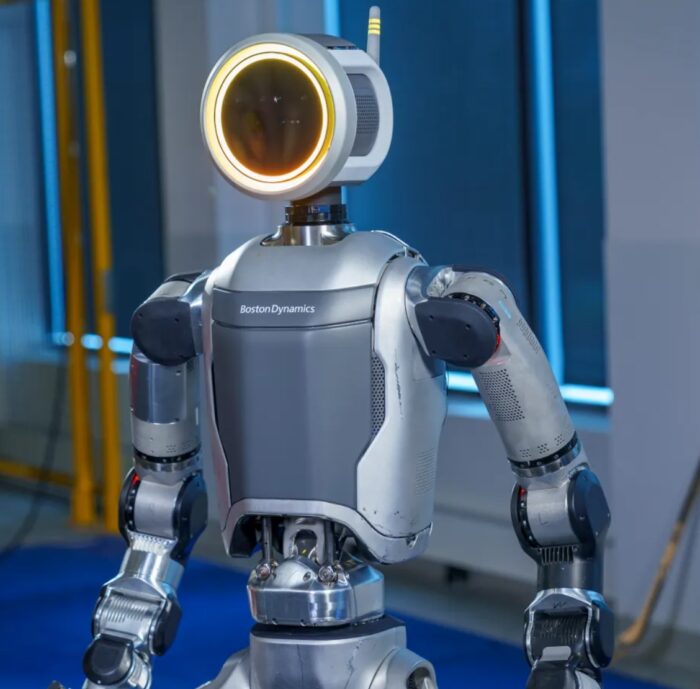 Boston Dynamics (now owned by Hyundai) has revealed its electric version of its Atlas robot. These robot videos always look impressive, but at the very least we know that we are seeing the best take. We don’t know how many times the robot failed to get the one great video. There are also concerns about companies presenting what the full working prototype might look like, rather than what it actually currently does. The state of CGI is such that it’s possible to fake robot videos that are indistinguishable to the viewer from real ones.
Boston Dynamics (now owned by Hyundai) has revealed its electric version of its Atlas robot. These robot videos always look impressive, but at the very least we know that we are seeing the best take. We don’t know how many times the robot failed to get the one great video. There are also concerns about companies presenting what the full working prototype might look like, rather than what it actually currently does. The state of CGI is such that it’s possible to fake robot videos that are indistinguishable to the viewer from real ones.
So it’s understandable that these robot reveal videos are always looked at with a bit of skepticism. But it does seem that pushback does have an effect, and there is pressure on robotics companies to be more transparent. The video of the new Atlas robot does seem to be real, at least. Also, these are products for the real world. At some point the latest version of Atlas will be operating on factory floors, and if it didn’t work Boston Dynamics would not be sustainable as a company.
What we are now seeing, not just with Atlas but also Tesla’s Optimus Gen 2, and others, is conversion to all electric robots. This makes them smaller, lighter, and quieter than the previous hydraulic versions. They are also not tethered to cables as previous versions.
My first question was – what is the battery life? Boston Dynamics says they are “targeting” a four hour battery life for the commercial version of the Atlas. I love that corporate speak. I could not find a more direct answer in the time I had to research this piece. But four hours seems reasonable – the prior version from 2015 had about a 90 minute battery life depending on use. Apparently the new Atlas can swap out its own battery.
Continue Reading »
Feb
13
2024
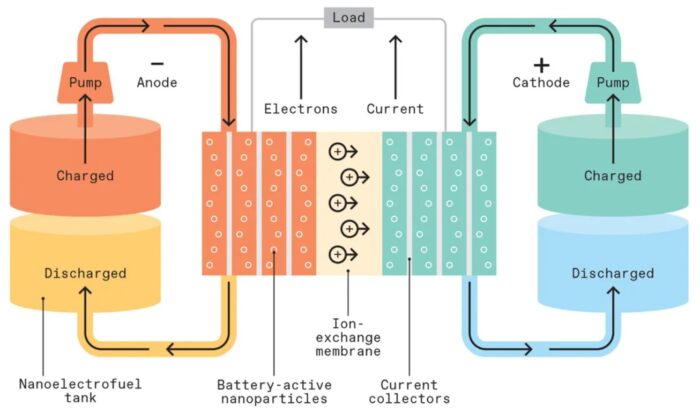 Battery technology has been advancing nicely over the last few decades, with a fairly predictable incremental increase in energy density, charging time, stability, and lifecycle. We now have lithium-ion batteries with a specific energy of 296 Wh/kg – these are in use in existing Teslas. This translates to BE vehicles with ranges from 250-350 miles per charge, depending on the vehicle. That is more than enough range for most users. Incremental advances continue, and every year we should expect newer Li-ion batteries with slightly better specs, which add up quickly over time. But still, range anxiety is a thing, and batteries with that range are heavy.
Battery technology has been advancing nicely over the last few decades, with a fairly predictable incremental increase in energy density, charging time, stability, and lifecycle. We now have lithium-ion batteries with a specific energy of 296 Wh/kg – these are in use in existing Teslas. This translates to BE vehicles with ranges from 250-350 miles per charge, depending on the vehicle. That is more than enough range for most users. Incremental advances continue, and every year we should expect newer Li-ion batteries with slightly better specs, which add up quickly over time. But still, range anxiety is a thing, and batteries with that range are heavy.
What would be nice is a shift to a new battery technology with a leap in performance. There are many battery technologies being developed that promise just that. We actually already have one, shifting from graphite anodes to silicon anodes in the Li-ion battery, with an increase in specific energy to 500 Wh/kg. Amprius is producing these batteries, currently for aviation but with plans to produce them for BEVs within a couple of years. Panasonic, who builds 10% of the world’s EV batteries and contracts with Tesla, is also working on a silocon anode battery and promises to have one in production soon. That is basically a doubling of battery capacity from the average in use today, and puts us on a path to further incremental advances. Silicon anode lithium-ion batteries should triple battery capacity over the next decade, while also making a more stable battery that uses less (or no – they are working on this too) rare earth elements and no cobalt. So even without any new battery breakthroughs, there is a very bright future for battery technology.
But of course, we want more. Battery technology is critical to our green energy future, so while we are tweaking Li-ion technology and getting the most out of that tech, companies are working to develop something to replace (or at least complement) Li-ion batteries. Here is a good overview of the best technologies being developed, which include sodium-ion, lithium-sulphur, lithium-metal, and solid state lithium-air batteries. As an aside, the reason lithium is a common element here is because it is the third-lightest element (after hydrogen and helium) and the first that can be used for this sort of battery chemistry. Sodium is right below lithium on the period table, so it is the next lightest element with similar chemistry.
Continue Reading »
Feb
01
2024
 It’s difficult to pick winners and losers in the future tech game. In reality you just have to see what happens when you try out a new technology in the real world with actual people. Many technologies that look good on paper run into logistical problems, difficulty scaling, fall victim to economics, or discover that people just don’t like using the tech. Meanwhile, surprises hits become indispensable or can transform the way we live our lives.
It’s difficult to pick winners and losers in the future tech game. In reality you just have to see what happens when you try out a new technology in the real world with actual people. Many technologies that look good on paper run into logistical problems, difficulty scaling, fall victim to economics, or discover that people just don’t like using the tech. Meanwhile, surprises hits become indispensable or can transform the way we live our lives.
Here are a few technologies from recent news that may or may not be part of our future.
Recharging Roads
Imaging recharging your electric vehicle wirelessly just by driving over a road. Sounds great, but is it practical and scalable? Detroit is running an experiment to help find out. On a 400 meter stretch of downtown road they installed inducting cables under the ground and connected them to the city grid. EVs that have the $1,000 device attached to their battery can charge up while driving over this stretch of road.
The technology itself is proven, and is already common for recharging smartphones. It’s inductive charging, using a magnetic field to induce a current which recharges a battery. Is this a practical approach to range anxiety? Right now this technology costs $2 million per mile. Having any significant infrastructure of these roads would be incredibly costly, and it’s not clear the benefit is worth it. How much are they going to charge the EV? What is the efficiency? Will drivers fork out $1000 for minimal benefit?
Continue Reading »
Jan
30
2024
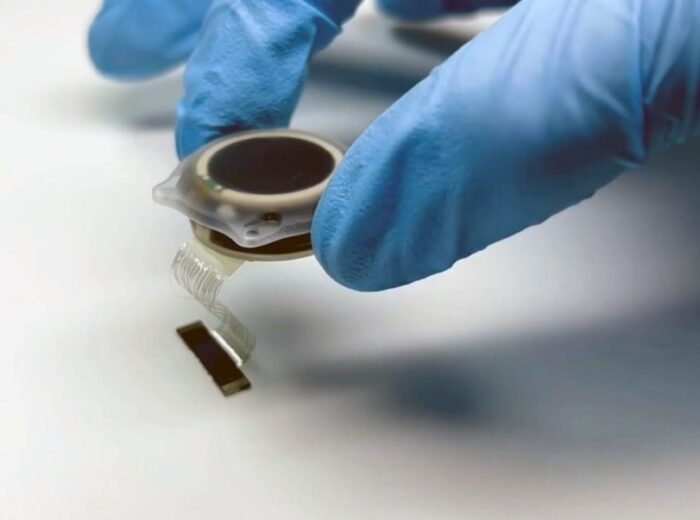 Elon Musk has announced that his company, Neuralink, has implanted their first wireless computer chip into a human. The chip, which they plan on calling Telepathy (not sure how I feel about that) connects with 64 thin hair-like electrodes, is battery powered and can be recharged remotely. This is exciting news, but of course needs to be put into context. First, let’s get the Musk thing out of the way.
Elon Musk has announced that his company, Neuralink, has implanted their first wireless computer chip into a human. The chip, which they plan on calling Telepathy (not sure how I feel about that) connects with 64 thin hair-like electrodes, is battery powered and can be recharged remotely. This is exciting news, but of course needs to be put into context. First, let’s get the Musk thing out of the way.
Because this is Elon Musk the achievement gets more attention than it probably deserves, but also more criticism. It gets wrapped up in the Musk debate – is he a genuine innovator, or just an exploiter and showman? I think the truth is a little bit of both. Yes, the technologies he is famous for advancing (EVs, reusable rockets, digging tunnels, and now brain-machine interface) all existed before him (at least potentially) and were advancing without him. But he did more than just gobble up existing companies or people and slap his brand on it (as his harshest critics claim). Especially with Tesla and SpaceX, he invested his own fortune and provided a specific vision which pushed these companies through to successful products, and very likely advanced their respective industries considerably.
What about Neuralink and BMI (brain-machine interface) technology? I think Musk’s impact in this industry is much less than with EVs and reusable rockets. But he is increasing the profile of the industry, providing funding for research and development, and perhaps increasing the competition. In the end I think Neuralink will have a more modest, but perhaps not negligible, impact on bringing BMI applications to the world. I think it will end up being a net positive, and anything that accelerates this technology is a good thing.
Continue Reading »
Jan
16
2024
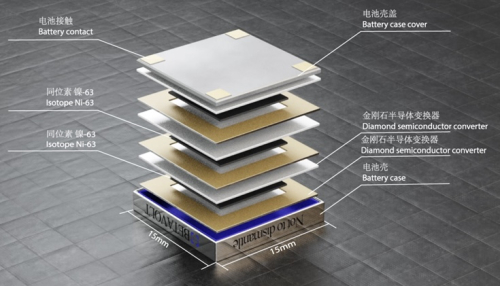 In 1964 Isaac Asimov, asked to imagine the world 50 years in the future, wrote:
In 1964 Isaac Asimov, asked to imagine the world 50 years in the future, wrote:
“The appliances of 2014 will have no electric cords, of course, for they will be powered by long- lived batteries running on radioisotopes. The isotopes will not be expensive for they will be by- products of the fission-power plants which, by 2014, will be supplying well over half the power needs of humanity.”
Today nuclear fission provides about 10% of the world’s electricity. Asimov can be forgiven for being off by such a large amount. He, as a science fiction futurist, was thinking more about the technology itself. Technology is easier to predict than things like public acceptance, irrational fear of anything nuclear, or even economics (which even economists have a hard time predicting).
But he was completely off about the notion that nuclear batteries would be running most everyday appliances and electronics. This now seems like a quaint retro-futuristic vision, something out of the Fallout franchise. Here the obstacle to widespread adoption of nuclear batteries has been primarily technological (issues of economics and public acceptance have not even come into play yet). Might Asimov’s vision still come true, just decades later than he thought? It’s theoretically possible, but there is still a major limitation that for now appears to be a deal-killer – the power output is still extremely low.
Continue Reading »
Dec
08
2023
 Remember the 1980 film, The Formula? Probably not, because it was a mediocre film that did not age well. The basic plot is that Nazi chemists during WWII developed a formula for synthetic gasoline. A detective investigating a murder gets embroiled in a conspiracy to cover up the existence of this formula, and he struggles to expose it to the world, but is ultimately foiled by the many layers of this conspiracy. At the heart of the conspiracy is the fossil fuel industry, who wants to protect their golden goose. I remember thinking at the time that this was dumb, and now I appreciate how dumb it is on a much deeper level.
Remember the 1980 film, The Formula? Probably not, because it was a mediocre film that did not age well. The basic plot is that Nazi chemists during WWII developed a formula for synthetic gasoline. A detective investigating a murder gets embroiled in a conspiracy to cover up the existence of this formula, and he struggles to expose it to the world, but is ultimately foiled by the many layers of this conspiracy. At the heart of the conspiracy is the fossil fuel industry, who wants to protect their golden goose. I remember thinking at the time that this was dumb, and now I appreciate how dumb it is on a much deeper level.
There is a scientific and critical thinking layer to the superficial thoughtlessness of this plot. From a critical thinking perspective, a conspiracy to suppress such a formula makes no sense. Such a formula (if we buy the premise of such a thing, which I don’t, as you will see) would be incredibly valuable to anyone who controls it. An oil company could (again, given the film’s premise) in a single stroke dominate the world’s energy production and crush the competition. But perhaps more critically, it makes no sense that such a formula would have been discovered almost 40 years prior to the timeframe of the film and yet was never reproduced. Have you every noticed that for any significant invention there are often a host of people claiming they really invented it. That’s because they likely did, or at least contributed to the invention. When our science and technology are at a point where a breakthrough is possible, it is likely that many people/labs/companies/nations will converge on the discovery at roughly the same time.
However, popular culture is stuck in the “lone genius” narrative, thinking of scientific breakthroughs as the unique product of a singular genius. This is just not how science typically works. Increasingly, it is a tangled web of collaboration with many players each contributing incrementally to an overall progress. Major inventions are “ripe”, and they have a paper trail. The notion that Nazi chemists were decades ahead of the rest of the world in such an immense technology is not plausible.
But even more fatal to the plot of this film is the premise of the title – that the limiting factor in the ability to fuel the world with synthetic gasoline is knowing the proper formula. Having a chemical formula for synthesizing hydrocarbons is not the tricky part. Whenever dealing with any energy technology, I find it extremely useful to ask the basic question – where is the energy coming from? If you don’t have a very thorough answer to this question, be skeptical.
Continue Reading »
![]() I have been following battery technology pretty closely, as this is a key technology for the transition to green energy. The most obvious application is in battery electric vehicles (BEVs). The second most obvious application is in grid storage. But also there are all the electronic devices that we increasingly depend on day-to-day. That same battery technology that powers your Tesla also powers your laptop and your smartphone.
I have been following battery technology pretty closely, as this is a key technology for the transition to green energy. The most obvious application is in battery electric vehicles (BEVs). The second most obvious application is in grid storage. But also there are all the electronic devices that we increasingly depend on day-to-day. That same battery technology that powers your Tesla also powers your laptop and your smartphone.
 Right now fossil fuels are the king of transportation fuel. They are relatively inexpensive, energy dense, and highly convenient. Burning gasoline produces a lot of energy for acceleration, but the fuel is also relatively stable (it won’t just explode), and usable over a large temperature range. You can quickly fill up your car with gasoline, have a long range on one tank, and there are filling stations everywhere.
Right now fossil fuels are the king of transportation fuel. They are relatively inexpensive, energy dense, and highly convenient. Burning gasoline produces a lot of energy for acceleration, but the fuel is also relatively stable (it won’t just explode), and usable over a large temperature range. You can quickly fill up your car with gasoline, have a long range on one tank, and there are filling stations everywhere. In an updated version of Dante’s Inferno there is one level of science hell that is specifically reserved for headline writers. In their hell there are endless signs pointing the way out of their torment, but all the signs are misleading or overhyped. They are therefore perpetually devastated by the difference between what they are promised and the reality.
In an updated version of Dante’s Inferno there is one level of science hell that is specifically reserved for headline writers. In their hell there are endless signs pointing the way out of their torment, but all the signs are misleading or overhyped. They are therefore perpetually devastated by the difference between what they are promised and the reality.
 Boston Dynamics (now owned by Hyundai) has revealed its
Boston Dynamics (now owned by Hyundai) has revealed its  Battery technology has been advancing nicely over the last few decades, with a fairly predictable incremental increase in energy density, charging time, stability, and lifecycle. We now have lithium-ion batteries with a specific energy of 296 Wh/kg – these are in use in existing Teslas. This translates to BE vehicles with ranges from 250-350 miles per charge, depending on the vehicle. That is more than enough range for most users. Incremental advances continue, and every year we should expect newer Li-ion batteries with slightly better specs, which add up quickly over time. But still, range anxiety is a thing, and batteries with that range are heavy.
Battery technology has been advancing nicely over the last few decades, with a fairly predictable incremental increase in energy density, charging time, stability, and lifecycle. We now have lithium-ion batteries with a specific energy of 296 Wh/kg – these are in use in existing Teslas. This translates to BE vehicles with ranges from 250-350 miles per charge, depending on the vehicle. That is more than enough range for most users. Incremental advances continue, and every year we should expect newer Li-ion batteries with slightly better specs, which add up quickly over time. But still, range anxiety is a thing, and batteries with that range are heavy. It’s difficult to pick winners and losers in the future tech game. In reality you just have to see what happens when you try out a new technology in the real world with actual people. Many technologies that look good on paper run into logistical problems, difficulty scaling, fall victim to economics, or discover that people just don’t like using the tech. Meanwhile, surprises hits become indispensable or can transform the way we live our lives.
It’s difficult to pick winners and losers in the future tech game. In reality you just have to see what happens when you try out a new technology in the real world with actual people. Many technologies that look good on paper run into logistical problems, difficulty scaling, fall victim to economics, or discover that people just don’t like using the tech. Meanwhile, surprises hits become indispensable or can transform the way we live our lives. Elon Musk
Elon Musk  In 1964 Isaac Asimov, asked to
In 1964 Isaac Asimov, asked to  Remember the 1980 film,
Remember the 1980 film, 




